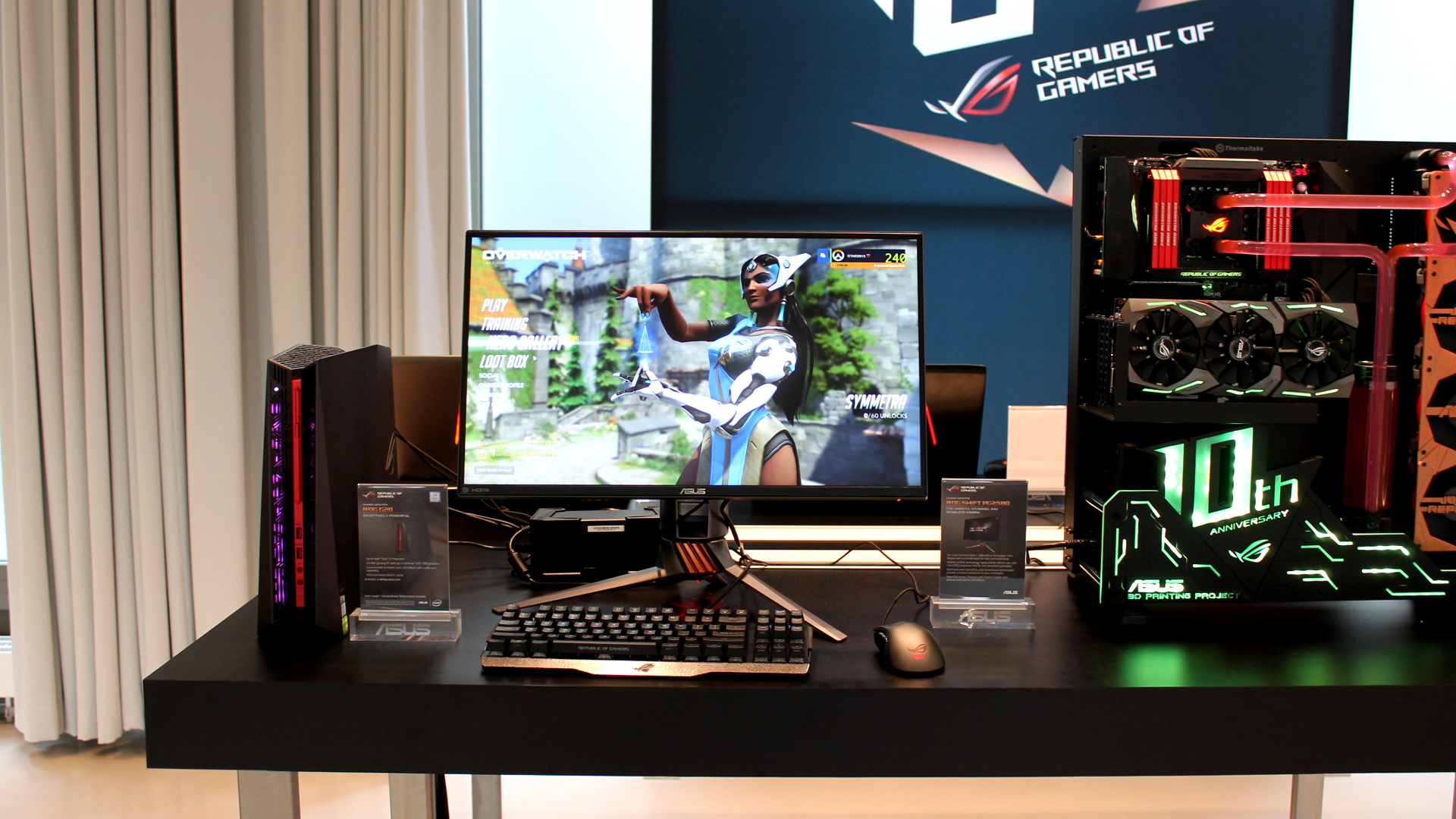Early Verdict
Asus has made its fastest refresh rate monitor yet. The PG258Q goes all the way up to 240Hz, making it a potentially great shout for competitive gamers.
Pros
- +
240Hz refresh rate
- +
Funky design
- +
Joystick menu
Cons
- -
'Only' 1080p
- -
TN panel compromises viewing angles
Why you can trust TechRadar
Most PC gamers are happy with hitting 60 frames per second (or FPS) in games. In recent years, however, the arrival of high-refresh-rate monitors has ushered in a new era of super-slick PC gaming where gaming at refresh rates of 120Hz, 144Hz or, in the case of Asus ROG Swift PG258Q, a whopping 240Hz, is easily achievable.
If you're running a PC that has a graphics card capable of pushing such a high number of frames to the monitor, gameplay is rendered in buttery-smooth high-fidelity. Not only does it look amazing, it can help you take down enemies a split second before they have the chance to react to you in their sights.
As such, having a monitor that's as fast as you is vital for playing e-sports or first-person shooter (FPS) games – such as Counter Strike: Global Offensive or similar – where twitchy-heavy movement and accuracy is key to victory.
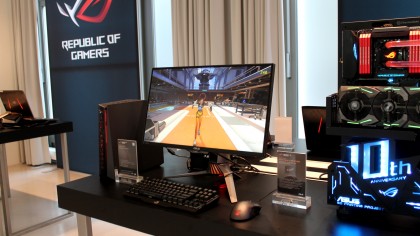
Showing this off brilliantly at IFA 2016 using Overwatch's training map, the 24.5-inch PG258Q perfectly demonstrates why competitive PC gamers in particular should consider upgrading to a monitor with a faster refresh rate. However, even casual fraggers will notice the difference compared to a standard 60 fps monitor.
Expected to land before March 2017, the PG258Q follows on from Asus' impressive PG248Q that can reach a refresh rate of 180Hz using overclocking. Its successor goes even further, increasing that number to 240Hz. It once again uses a Twisted Nematic (TN) panel, rather than In-Plane Switching (IPS), which results in slightly narrower viewing angles but allows it to achieve its fast response time.
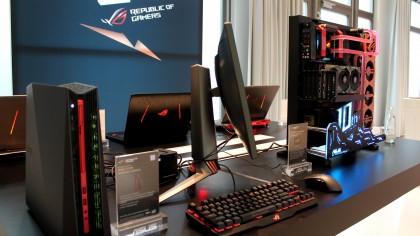
In terms of its other specs, the PG258Q has a pixel-resolution of 1,920 x 1,080, a 1ms gray-to-gray (G2G) response time and narrow bezel design that makes it suitable for multi-display setups. The clear disadvantage here is its Full HD spec, which is necessary right now if you want to game with a super-fast refresh rate. That will come to 1440p (and higher) resolution monitors in time, but there is nothing that can currently be done about the trade-off.

Like the PG248Q, the PG258Q has a full feature set that includes Nvidia's G-Sync frame-syncing tech that eliminates tearing by syncing any frames outputted by the GPU with the monitor's refresh rate. G-sync also benefits gaming at lower frames per second, so gameplay would still be smoother with it turned on even when gaming below the monitor's refresh rate in graphically intensive games.
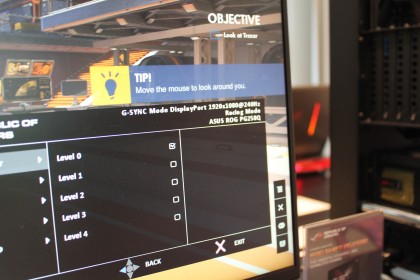
In terms of design, the Asus PG258Q has a Mayern-inspired pattern design on the rear that's typical of Asus' ROG-branded products of late. There's a joystick along the left-hand rear of the monitor that can be used for cycling through menus.
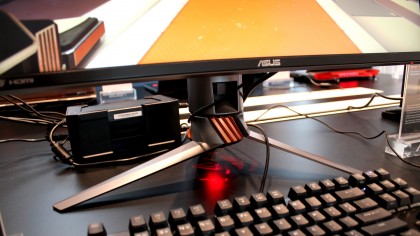
The PG258Q has the usual tilt, pivot and height adjustability options that you would expect on a premium panel, and Asus has once again bolted an LED projector into the base which adds a heavy dose of gamer cool. You might find that 'feature' completely unnecessary, and if so then the Asus ROG-branded monitors on the market probably aren't for you.
What is a hands on review?
Hands on reviews' are a journalist's first impressions of a piece of kit based on spending some time with it. It may be just a few moments, or a few hours. The important thing is we have been able to play with it ourselves and can give you some sense of what it's like to use, even if it's only an embryonic view. For more information, see TechRadar's Reviews Guarantee.
